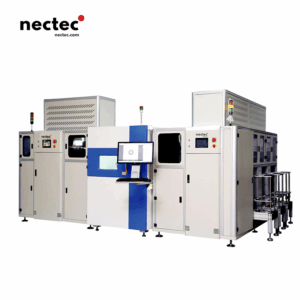In today’s fast-paced manufacturing sector, the efficiency of production processes can greatly influence a company’s bottom line. One of the most revolutionary advancements that has come to the forefront of manufacturing technology is the automatic pick and place machine. This essential piece of equipment can significantly enhance productivity, accuracy, and overall operational effectiveness.
ピック・アンド・プレイス・マシンとは?
At its core, a pick and place machine is an automated system designed to select components from a defined location and place them in designated spots on a production line. This process is primarily used in PCB assembly but is also valuable in various applications across multiple industries, including food, automotive, and consumer electronics. With the growing complexity of products and the increasing demand for accuracy in production, these machines have become indispensable to manufacturers worldwide.
自動ピック&プレース・マシンの主な利点
1. Enhancing Production Efficiency
One of the most significant advantages of automatic pick and place machines is their ability to enhance production efficiency. By automating the labor-intensive process of picking and placing components, manufacturers can reduce cycle times and minimize the chance of human error. This enhancement often translates to a substantial increase in output, which can be crucial in meeting customer demand.
2.精度と一貫性の向上
Human operators may experience fatigue, leading to mistakes in placement. Automatic machines, on the other hand, operate with precision and consistency, ensuring that each component is placed correctly on the first try. This improvement in accuracy reduces the likelihood of faulty products, which can decrease waste and lower production costs.
3.スケーラビリティ
投資 卸売自動ピックアンドプレース機 allows businesses to scale their operations seamlessly. As production needs grow, these machines can be adjusted to accommodate increased component volumes without necessitating a complete overhaul of existing processes. This scalability means that manufacturers can respond flexibly to market changes without suffering from production bottlenecks.
4.費用対効果
Though the initial investment in 卸売自動ピックアンドプレース機 may be significant, the long-term savings are noteworthy. By reducing labor costs, increasing throughput, and minimizing errors, these machines can lead to a quick return on investment (ROI). Additionally, many suppliers often offer competitive pricing for wholesale purchases, making it a financially sound decision for manufacturers.
ピック&プレース機の種類
The market offers various types of pick and place machines, tailored to different applications and manufacturing needs. Understanding these types can help businesses make informed purchasing decisions.
1. Centroid Type
Centroid-type pick and place machines utilize a single, central axis to pick and place components. This design is often preferred for smaller-scale operations and simpler assemblies. It is typically easy to use and offers versatility for different production needs.
2. Cartesian Type
The Cartesian pick and place machine operates on an X-Y-Z coordinate system, allowing for intricate movements and precise placements. This machine is preferred for high-precision applications, such as PCB assembly in electronic manufacturing.
3. Delta Type
The delta type features a unique design that consists of three arms mounted on a single base. This structure allows for rapid movements and is ideal for high-speed applications, making it beneficial in industries that require quick component placement.
Implementation Factors
When considering the adoption of wholesale automatic pick and place machines, manufacturers must evaluate several factors to ensure a successful implementation.
1. Layout and Space Considerations
The physical layout of the production facility is crucial when implementing a pick and place machine. Businesses need to ensure that there is adequate space for the machine, as well as for any ancillary equipment necessary for seamless operation. A well-thought-out layout can enhance workflow efficiency and reduce downtime.
2.トレーニングとサポート
Proper training for staff who will operate and maintain the pick and place machine is essential for maximizing its effectiveness. Manufacturers should ensure that they have access to robust training programs and ongoing support from suppliers, providing peace of mind and business continuity.
3.メンテナンスと維持管理
Regular maintenance is critical for ensuring the longevity and functionality of automatic pick and place machines. Businesses must establish a maintenance schedule and have qualified personnel to carry out repairs when necessary. Good maintenance practices can significantly extend the lifespan of equipment and prevent costly downtimes.
ピック&プレース技術の将来動向
The field of pick and place technology is evolving rapidly, responding to the growing demands of the manufacturing industry. Some trends to watch for include:
1.AIと機械学習の統合
As artificial intelligence and machine learning continue to make strides, the incorporation of these technologies into automatic pick and place machines is expected to enhance decision-making processes, optimizing efficiency even further. These machines may soon learn from past operations, adapting to changes in production requirements without extensive reprogramming.
2.カスタマイズ性の向上
With the shift towards mass customization in manufacturing, future pick and place machines are likely to feature enhanced capabilities for handling diverse component types and configurations. This evolution will empower manufacturers to accommodate more varied customer specifications without sacrificing speed or quality.
3.コネクティビティの強化
As the Internet of Things (IoT) gains traction in the industrial sector, future pick and place machines will likely feature enhanced connectivity options. This development will enable real-time data analysis and monitoring, further improving productivity and operational insights.
In summary, wholesale automatic pick and place machines represent a transformative investment for manufacturers seeking to optimize their production processes. With benefits ranging from enhanced efficiency and accuracy to significant cost savings, these machines are quickly becoming indispensable fixtures in modern manufacturing environments. As businesses continue to adapt to the ever-evolving demands of their industries, the smart adoption of these advanced technologies can lead to substantial competitive advantages.








